If I had a £1 for every time it was said that Leyland brakes were made of cream cheese, I swear I would not have to work anymore. The brakes on Leyland tractors do not have a good reputation, and that is putting it mildly. This is why I am glad to say that they were improved on by the time the Harvest Gold Marshall range of tractors came along, which were fitted with the much more practical wet brakes. But do the brakes on Leyland tractors deserve this bad name?
Dry Brakes on the Leyland Middleweight Range of Tractors
So the Leyland middleweight range of tractors includes the following models: 245, 253, 255, 270, 262, 272, 282, 462, 472 and 482. These were all fitted with the same dry brake system. This consists of 2 brake discs and a brake actuator for each side of the tractor.
Is the Reputation Justified?
While this dry braking system may not be as good as other options, you can make the brakes on your Leyland tractor pretty good. If you have an overloaded tractor with a trailer, or you do not do any maintenance on your brakes, then yes you will find that the brakes are not the best, but this doesn’t always have to be the case. You can get them into pretty good shape with a bit of care.
What To Look Out For
Many Leyland tractors that we come across (either in our workshop or through speaking to people over the phone) still have the original brake discs in them. Being the age that they are, the original brakes discs contain asbestos and they are not as good as the modern friction material found in the new brake discs. When the older brake discs get hot, they turn a mahogany brown colour and they cure, meaning that they turn a bit ‘glassy’ and they lose their friction. This is not a good physical property for a brake disc. So if you open up your brakes on your middleweight Leyland (or lightweight Leyland for that instance) and you see brown brake discs, then these should be replaced with new, modern brake discs.
But......Do Not Be Confused by JCB Brake Discs
Another thing to look out for is the brake discs themselves. The brake discs on the Leyland middleweight tractors is part number 18G8238. The original Leyland brake discs have the friction material riveted on to the discs. JCB machines use the same braking system, but as they are heavier machines, they have a different friction material to make up the extra weight. These JCB brake discs look the same as the Leyland brake discs, with the same size and number of splines etc, but they have the friction material bonded onto the metal discs. It is a common misconception that because they are a harder friction material, that they will work better on a Leyland tractor, but this is not the case.
Do not put these bonded JCB brake discs on a Leyland tractor!!!
Here at Tractor Spare Parts Ltd, we offer both the Leyland tractor and the JCB brake discs (call us for more details on 01335 310538), and we also offer a re-lining kit if you are happy to reuse your old metal discs and rivet on the friction material yourself. On that note if you are thinking of buying the relining kit, 18G8239, then you need to make sure that your old brake discs are not the bonded type.
One brake disc relining kit contains 4 frictions pads and the rivets. The brake discs have friction pads on both sides, so this is enough for 2 brake discs, or one side of your tractor. Therefore, you will need 2 kits per tractor.
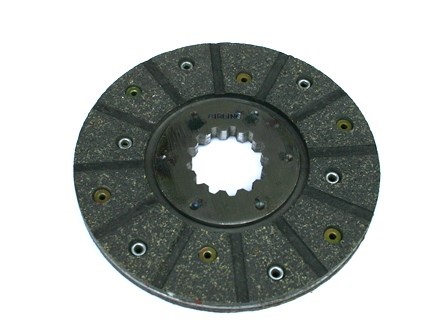
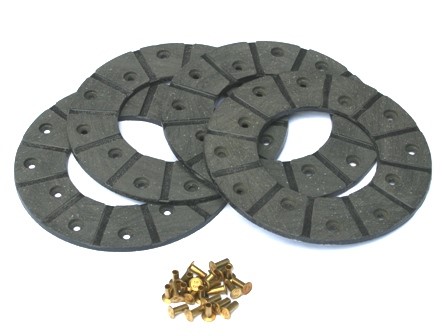
The Actuators
So, the brake actuators on the middleweight Leyland tractors are quite straightforward too. They consist of the two metal plates, which are kept together by 3 springs, part number 27H3503. Each brake actuator has 5 balls, part number BLS128, inside which slide up a cone shaped indent on the inside of the actuator and causes the actuator to expand and press on the brake discs.
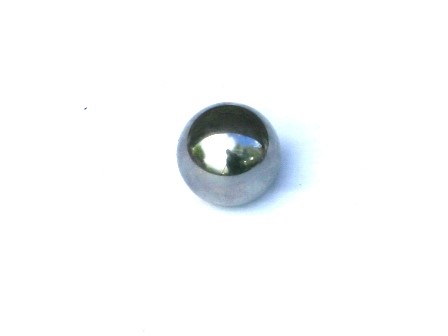
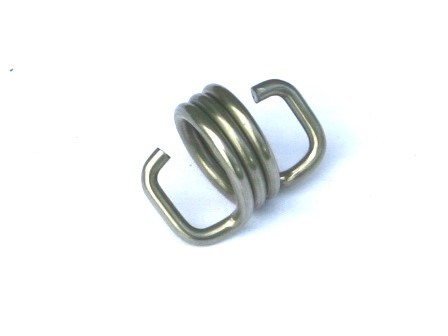
Quite often the balls will get rusty, and the surface will become pitted, meaning that they do not roll smoothly in the groove, and the symptom in the brakes is the grabbing or locking of the brakes. Sometimes it is possible to just replace the balls and springs on the actuator and they will go again. It is very important to replace both the balls and springs at the same time as this will prevent grabbing of the brakes.
If the tractor has been hot, then the brake actuator plates themselves may have warped. This can lead to symptoms on your tractor such as the brakes locking up and grabbing, and you having to put the tractor in reverse in order to release the brakes. If your Leyland tractor is doing this, then it may be time to replace the brake actuators, or brake expanders as they are sometimes known.
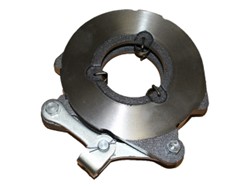
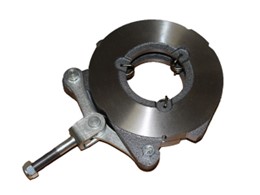
The brake actuators for the Leyland middleweight tractors, as seen in the pictures above, either come with or without the operating rod. The majority of times this operating rod, part number 27H3498, does not need replacing, and by buying the ‘basic’ actuator it can save a lot of money. To swap out the operating rod is as simple as removing the clevis and putting the rod in and reattaching it.
Cylinders, Fluids, Pipes, and Seals
I think talking about the slave cylinders, master cylinders and associated pipework is for another day, as I have gone on for enough right now. These components are just as important for the braking system. Look out for the next blog about these brake components and how they can affect the braking system.
So, Are They All That Bad?
The brakes on the Leyland tractors do have a bad reputation, and maybe they were slightly behind the times of their competitors. However, with the modern brake friction material, and a bit of knowledge about the set-up of the brakes (which can be found in the workshop manuals for the Leyland tractors, which should be followed) and a bit of patience, the brakes can become quite good.
Brakes are so important as they stop us when we are working or driving the tractors, and they can prevent serious damage or even death. We always say that the brakes are the most important part of the tractor, they are even more important than getting the tractor to start. Safety first! That much has always been true!





